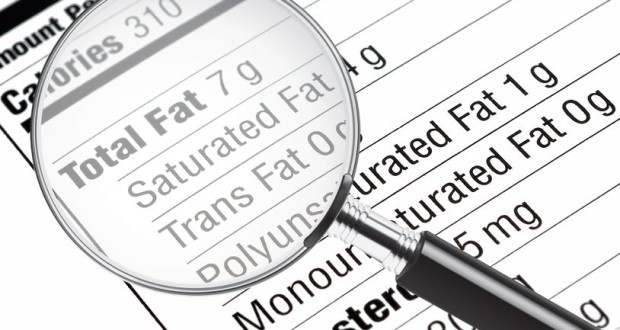The topic of fat can be a somewhat confusing subject, as we are frequently told that while some types of fat are good, high levels of other kinds of fat are indicative of current or future health problems. We at Natural Knowledge 24/7 would like to shed some light on this issue, and focus on the bad fats, namely saturated fat and trans fats. In order to maintain optimal health, it is important to understand how these fats relate to both your health and diet.
Saturated Fats
Saturated fat consists of numerous fat molecules. In turn, these molecules are made up of carbons, linked together by a single bond. The carbons within the molecules are saturated with hydrogen particles – hence the term, saturated fat. Humans consume saturated fats from animal protein and dairy products. Common foods with saturated fats include butter, cheese and various types of meats. It is also found in coconut and palm oil. Diets high in saturated fat raise levels of bad cholesterol, also known as LDL cholesterol. In turn, this can lead to an increased risk of cardiovascular disease and type 2 diabetes.
Your body produces virtually all of the saturated fat it needs per day. Consequentially, your intake of saturated fat should be very low. In the 2010 edition of its dietary guidelines for the American Public, the US Department of Agriculture (USDA) states that less than 10 percent of your daily consumption of calories should come from saturated fats. This works out to about 20 grams of saturated fat daily.
Trans Fats
Most trans fats are not found naturally in food products, but instead come about through food processing. Producers make trans fat by mixing hydrogen into liquid vegetable oils, allowing them to maintain a more solid form at room temperature. As you would expect, this fact is a telltale sign about the impact that trans fats have on your health.
Trans fats were initially used by food manufacturers to help make foods that were easy to cook and resistant to spoilage. Soon after their introduction to marketplace, trans fats were used in a number of products, including French fries, potato chips, cookies, crackers and fried foods. Research later revealed that trans fats had a potentially devastating impact on human health. In addition to causing LDL cholesterol to rise to unhealthy levels, trans fats also caused the body’s healthy cholesterol – HDL cholesterol – to decline noticeably. Studies have also linked trans fats to higher rates of heart disease and diabetes.
In the past, trans fats were listed as “partially hydrogenated vegetable oils” on an item’s list of ingredients. As information came to light about the dangers of trans fats, new regulations were installed to make food producers more forthcoming about the trans fats in their products. Today, a product’s nutrition label must state how much trans fat the product contains.
How Much Saturated Fat and Trans Fat Do Americans Consume?
According to the USDA, Americans get the bulk of their saturated fat from full-fat cheese, pizza, grain-based desserts, dairy based desserts, chicken and chicken-mixed dishes, sausage, bacon, hot dogs and ribs. Generally, Americans consume too much saturated fat; the USDA estimates that Americans get about 110% of the required amount of saturated food per day.
The USDA regards trans fats as so unhealthy that it advises Americans to consume as little trans fats as possible. Since trace amounts of trans fats are impossible to avoid, the USDA recommends that Americans should consume less than 2g of trans fats per day. At almost 6g per day, Americans consume roughly triple that recommendation.
A Healthier Diet
While Saturated fats and Trans fats can certainly stand in the way of a healthy diet, they are obstacles that can be avoided with proper diet. First, replace processed meats such as sausage, bologna, salami and hot dogs with lean meats such as skinless chicken, boneless chicken and turkey breast. Lean and extra-lean variants of ground beef can also be found in supermarkets. Fish are another fine example of lean meats.
Speaking of lean fish, they are rich in a type of fat that is actually good for your body – monounsaturated fat. Studies have reported that a diet with a proper amount of monounsaturated fat can reduce bad cholesterol levels, lower your risk of heart disease and stroke, help you lose weight, and alleviate symptoms of rheumatoid arthritis. In addition to fish, you can find significant amounts of monounsaturated fat in the following foods:
|
|
|
|
|
|
|
|
|
|
Polyunsaturated fats are another healthy type of fat, and carry with them the same benefits of monounsaturated fats. Below is a list of foods with significant quantities of polyunsaturated fat:
|
|
|
|
|
|
|
|
|
The American Heart Association states that 25 to 35 percent of your daily calorie intake should come from unsaturated fats. On a 2000 calorie diet, this works out to about 40 to 77 grams per day.
Saturated fats and trans fats can pose a risk to your long-term health, and should only be consumed in the appropriate quantities. By limiting your amount of unhealthy fats and focusing on fats that improve your body’s health, you can ward off serious medical ailments while keeping yourself in good shape.
 Natural Knowledge 24/7 Educate yourself with nutrition, health and fitness knowledge.
Natural Knowledge 24/7 Educate yourself with nutrition, health and fitness knowledge.






